Determining the motion of stars
Think of the star's motion as divided into two parts,
- Motion toward us or away from us.
- Motion sideways.
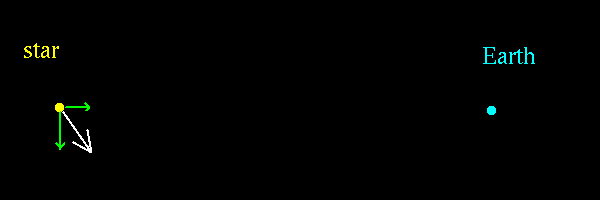
Motion toward us or away from us
Motion toward us or away from us can be determined using the
doppler shift.
If the star is moving away, the spectral lines are redshifted:
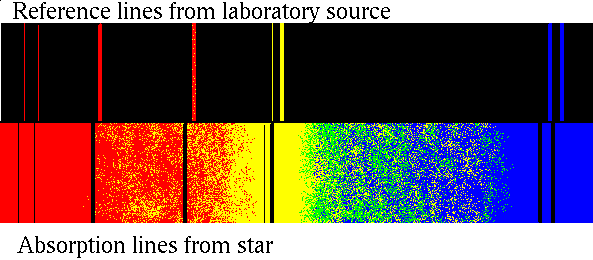
The amount of the shift is proportional to how fast the star is moving
away.
If the star is moving towards us, the spectral lines are blueshifted:
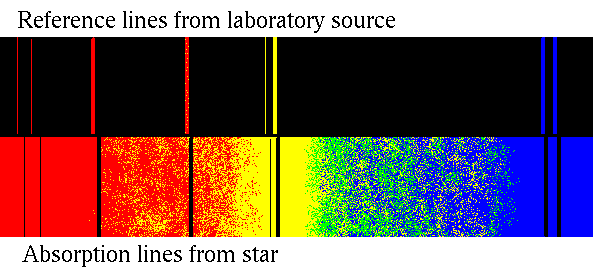
The amount of the shift is proportional to how fast the star is toward
us.
Motion sideways
We can see the sideways motion of as star directly by comparing
photographs made several years apart if
- the star is near enough.
- it is moving fast enough.
Suppose that we look at the sky from our blue earth and a nearby
star (the yellow one) moves over a ten year period:
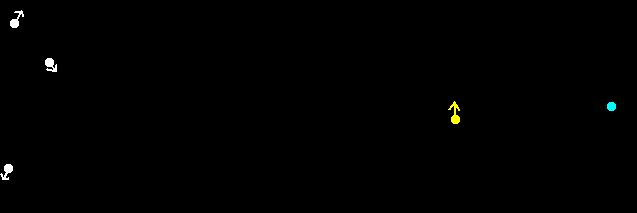
The background stars move too, but since they are further away, their
angular motion is less.
Here is what we see.
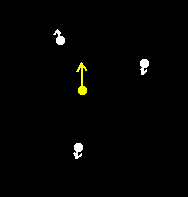
This motion across the celestial sphere is called the star's
proper motion.
If
- we measure the star's proper motion in arc seconds per year, and
- we know the distance to the star
then we can compute how fast the sideways motion is in m/sec.
If we can measure both the part of the motion along our line of
sight and the part of the motion across our line of sight, then
we know the star's true motion through space.
ASTR 122 course home page
Updated 21 November 2007
Davison E. Soper, Institute of Theoretical Science,
University of Oregon, Eugene OR 97403 USA





